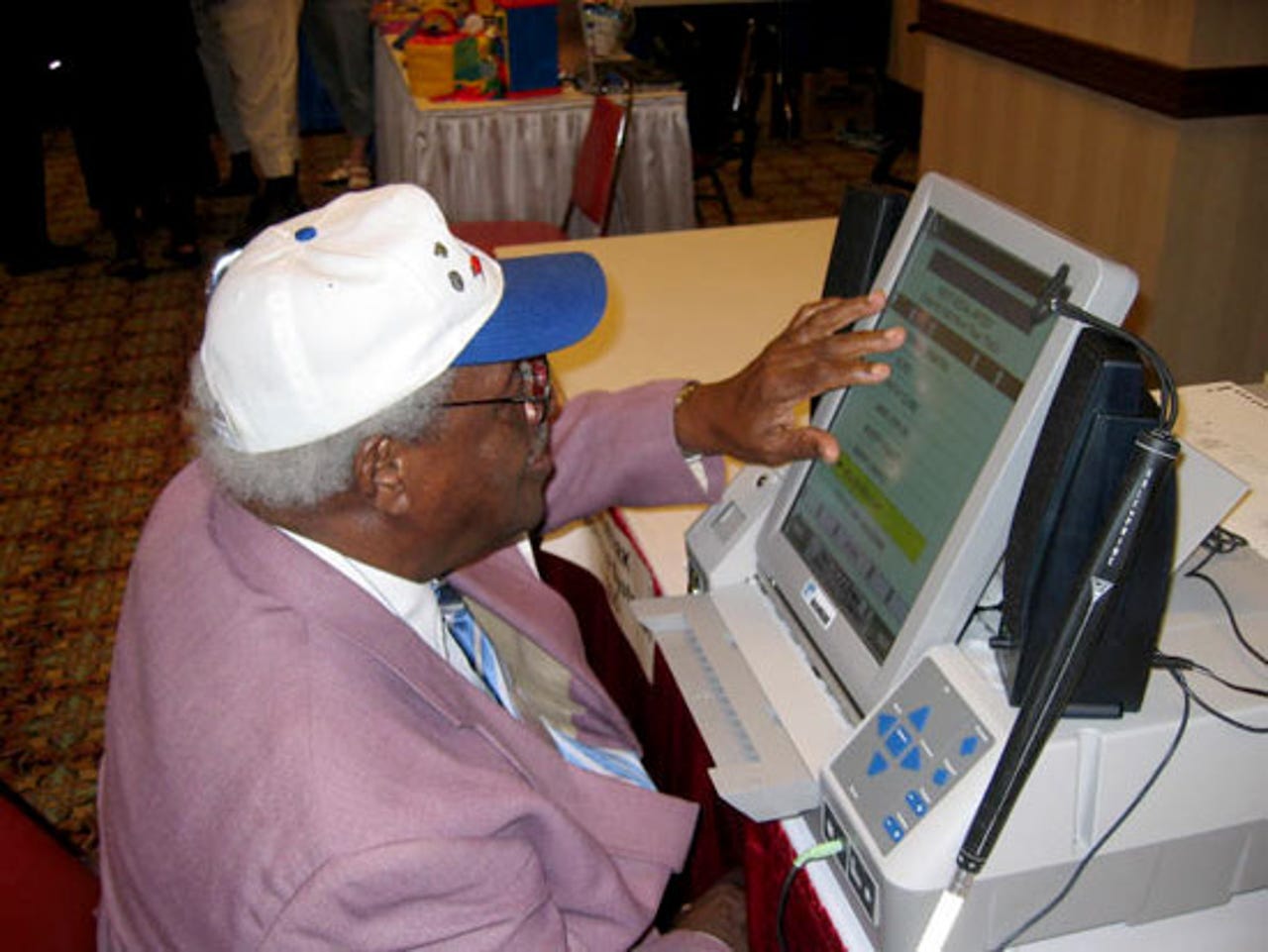Photos: E-voting gets touchy


Automark system
A visitor tries out Automark's electronic voting system at the National Federation of the Blind conference in July 2005. The Voter Assist Terminal is designed for use by people who aren't able to personally mark a ballot as a result of physical impairments or language barriers, the company says. A paper printout of the finished ballot is provided to voters.
Automark VAT in production
The Automark VAT, seen here in production, is a hybrid of several devices: scanner, printer, touch screen display and input device. The data for a given poll, such as a candidate's name, is stored on a compact flash card, a storage technology used in digital cameras. Officials can customize the data--for example, they can give phonetic pronunciation of names for use in a synthesized speech feature.
Almost finished Automark
The almost-finished machine. In use, voters can carry out the voting process using the touch screen, a "puff-sip" device, or by following audio prompts along with a keypad. AutoMark says the system should be in use by more than 30,000 precincts by November's elections, and sales will exceed $100 million this year.
Avante Vote-Trakker
Another new maker of e-voting systems is Avante International Technology, which produces a range of systems under the Vote-Trakker brand. Shown here is the Vote-Trakker EVC308-SPR-FF, a full-face system with a 30-inch touch screen that will display candidate names in at least 14-point font, as laid out by Federal Election Commission requirements. It also has a pop-up screen.
Vote-Trakker in use
Avante's system in use for early voting in the general election in Sacramento County, Calif., over 11 days in 2002. The touch-screen device is intended to aid people with impairments that may prevent them from casting a ballot otherwise.
Sacramento e-voting
The Vote-Trakker prints out a paper record of the ballot image once the individual has completed their choices. The record can act as a verification that the vote has been tallied, Avante says.